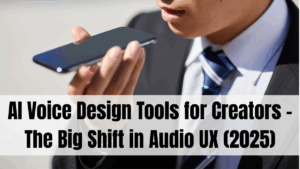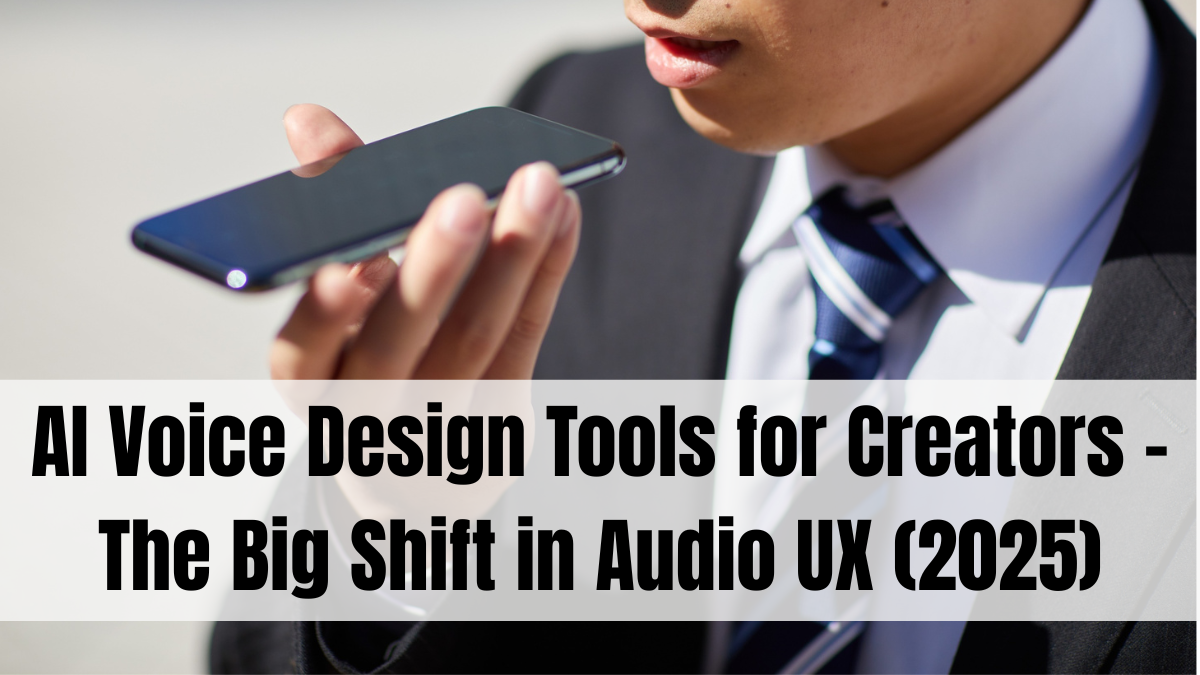The landscape of audio experience design is undergoing a seismic shift, driven by the rapid advancement of AI voice design tools 2025. Creators across India and globally are harnessing artificial intelligence to craft highly intuitive, natural-sounding, and personalized audio interactions that redefine user engagement.
From podcasts to interactive voice assistants and immersive audio apps, AI tools empower creators to move beyond traditional voiceover methods, enabling dynamic content generation, real-time modulation, and context-aware voice interfaces that enhance the listener’s experience.

Key Features Transforming Voice Design
Modern AI voice design tools integrate a range of sophisticated capabilities, including:
-
Natural Language Processing (NLP) for understanding context and intent
-
Voice synthesis and cloning that produce lifelike, expressive speech
-
Emotion and tone modulation allowing dynamic changes based on user mood or content type
-
Multilingual support essential for India’s diverse linguistic audience
-
Interactive voice response (IVR) design for seamless conversational flows
These features allow creators to produce audio content that feels personalized, engaging, and highly accessible.
Popular AI Voice Design Platforms in 2025
Several platforms have emerged as favorites for Indian creators:
-
Eleven Labs: Renowned for ultra-realistic voice cloning and customizable emotional range.
-
Descript Overdub: Enables quick voice editing and overdubbing with minimal technical skill.
-
Resemble AI: Combines text-to-speech with voice conversion for interactive storytelling.
-
Google Cloud Text-to-Speech: Offers extensive language and voice options with neural networks.
These platforms lower the barrier to entry for creators, allowing even small teams and independent artists to produce professional-grade audio content.
Applications Across Industries
The impact of AI voice design extends beyond entertainment. Key sectors embracing these tools include:
-
Education: Creating multilingual audiobooks and interactive learning modules.
-
Customer Service: Developing intelligent IVR systems that respond naturally to queries.
-
Healthcare: Offering personalized voice coaching and therapy support.
-
Gaming: Enhancing NPC dialogues with context-aware emotional voices.
The versatility of AI voice tools is accelerating innovation in user experience design across the board.
Challenges and Ethical Considerations
While the potential is vast, creators and companies face challenges:
-
Deepfake voice concerns: Ethical use policies and consent frameworks are crucial.
-
Data privacy: Protecting voice data and user interactions remains a priority.
-
Quality control: Ensuring AI voices maintain authenticity without sounding robotic.
Industry bodies and developers are actively working on transparency, regulation, and user education to build trust in AI-generated voices.
The Future of Voice UX Design in India
Looking ahead, AI voice design tools will integrate more closely with other AI domains such as emotion recognition, augmented reality, and 5G connectivity. This convergence will enable fully immersive audio experiences tailored to individual contexts and environments.
For Indian creators, this means exciting opportunities to craft culturally nuanced voice content that speaks directly to diverse audiences — transforming not only how stories are told but how brands and services connect with users.
FAQs
What are AI voice design tools?
They are software platforms that use artificial intelligence to create, modify, and personalize synthetic speech for various applications.
How do these tools benefit creators?
They simplify voice content creation, enable dynamic modulation, support multiple languages, and reduce production costs.
Are AI voice design tools widely used in India?
Yes, especially among podcast producers, voice-over artists, advertisers, and interactive media developers.
What ethical issues are associated with AI voice design?
Concerns include misuse for deepfakes, privacy of voice data, and maintaining transparency about AI-generated voices.
What trends will shape AI voice design in the future?
Integration with AR, emotion AI, real-time user context adaptation, and deeper multilingual capabilities.
Click here to know more.
